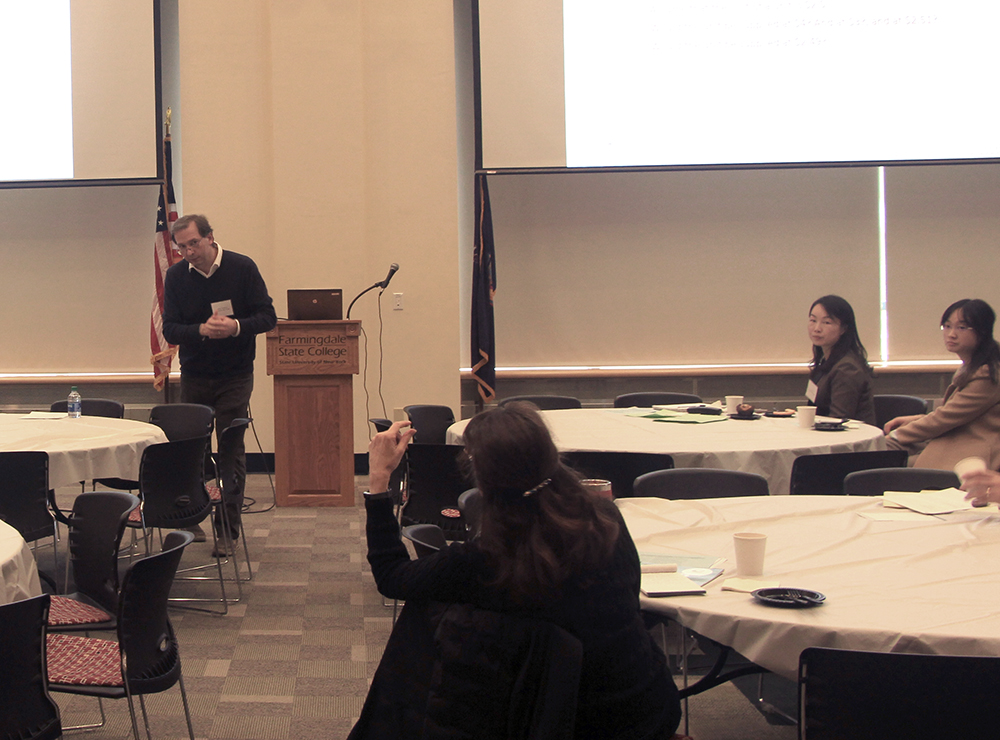The Economics Department seeks to bridge the gap between the high school classroom and the college classroom in order to form a strong sense of connectivity not only within the curriculum but also with the tools that the instructor uses to deliver the information.
As part of this initiative, on March 6, 2020, the Economics Department held its first teaching conference entitled "Challenges and Practices: Teaching Economics and Financial Literacy among K-12 and College Students" in Long Island. The six professors from the Economics department and one professor in Finance shared resources and methods in teaching introductory levels of economics and personal finance courses to high school teachers.
Youth mostly get exposed to economic and financial education in high school and college,
while the expectations and requirements of the curriculum vary by state and school
districts. New York State includes economics and personal finance learning standards
for grades kindergarten through 12. However, a very small number of teachers are trained
in economics and/or personal finance except for the certification in teaching business
and social studies. Moreover, some high school students who have an interest in economics
and personal finance take further steps
to enroll in college-level economics or personal finance courses through the University
in High School program (UHS).
In an effort to advance our local high school and college classroom connectivity, Dr. Xu Zhang proposed the "Challenges and Practices: Teaching Economics and Financial Literacy among K-12 and College Students" teaching conference.
The professors in the Economics Department each gave an insightful presentation to our attendees on how to better strengthen the educational communication to their students. They focused on a variety of topics within economics and personal finance.
One example is a presentation by Dr. Kenneth Liao who introduced how to use games or instantaneous polls to engage students in the classroom. The cupcake demonstration Dr. Liao described allows the student to see how their actions and choices can cause different possible outcomes. Arranging different tools and restrictions around how they can build their cupcakes, demonstrated to the student the basic principles of probability. This lesson was very hands-on and the attendees agreed it can provide a fun, interactive, and delicious experience for their students. Dr. Abeba Mussa and Dr. Meeghan Rogers reviewed important skills in money management and debt management. Dr. Abeba Mussa and Dr. Meeghan Rogers reviewed important skills in money management and debt management.
This area may need a heightened focus for UHS students as they start to establish their own financial history as they look to seek higher education. Both Dr. Abeba Mussa and Dr. Meeghan Rogers provided a few case studies for the University in High School instructors, teachers, and counselors in attendance to demonstrated how they teach these lessons to their students. Dr. David Vitt and Dr. Rick Weber incorporated online simulations and technology in teaching basic economic concepts. This was a key strategy to help UHS students become more engaged when they have the opportunity in their high school classroom to learn about economics and personal finance. Maintaining a level of technical engagement can really spark the UHS students to stay tuned in and on track with current economic topics.
Concluding the conference the attendees found great value in the presentations
and tactics presented by our faculty. As the first step towards the financial education
initiative among youth, the teaching conference on economic and financial literacy
has triggered more communications among regional educators. FSC is proud to host our
first teaching conference to bridge the gap between the college classroom and the
high school classroom this past spring.
